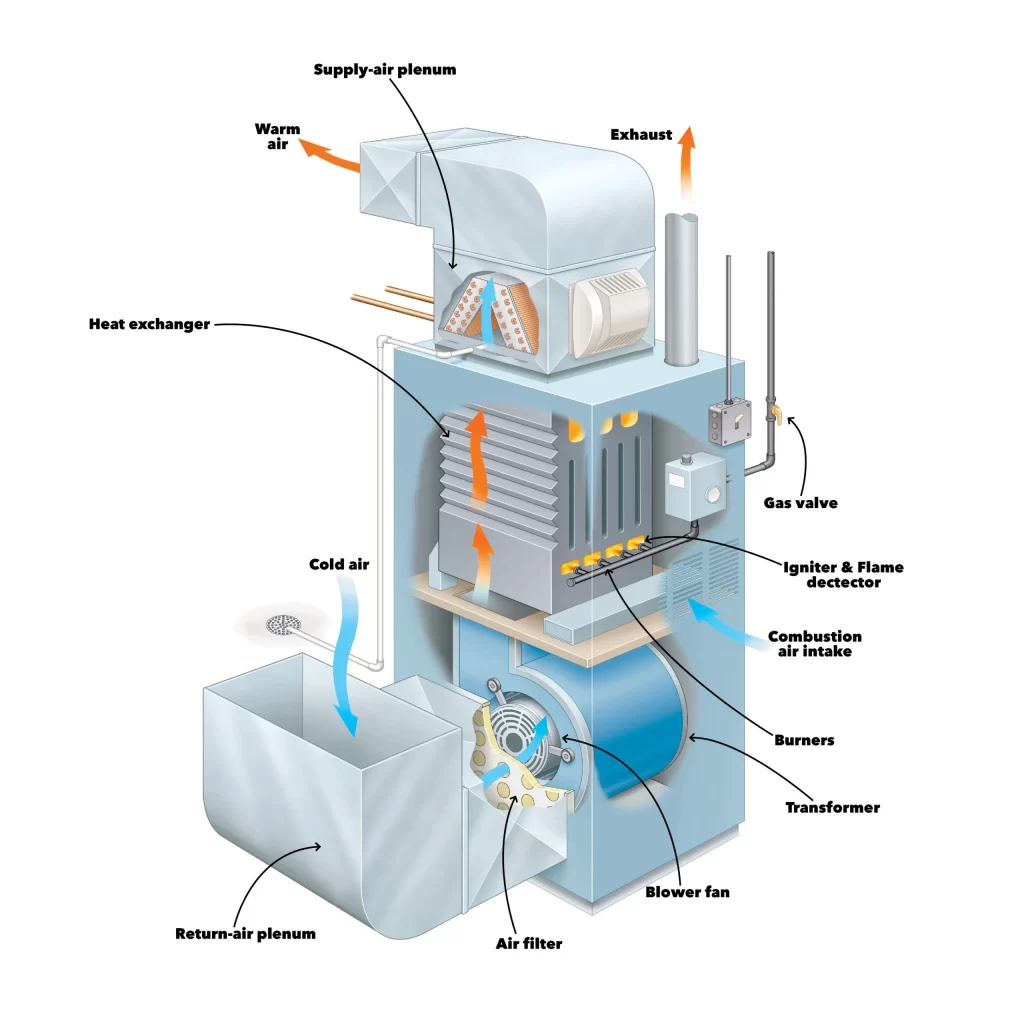If you’re like most homeowners, you probably don’t think about your gas furnace until an uncomfortable chill settles into your home. However, if you’re considering replacing your furnace, it’s worth exploring the latest options and features. The good news? Today’s energy-efficient gas furnaces are a significant upgrade from older models!
Size Matters:
The size of your gas furnace, measured in BTUs (British Thermal Units), is critical—but bigger isn’t always better. A furnace that’s too large or too small for your home won’t provide the consistent warmth you need. Modern energy-efficient gas furnaces are often smaller in size than older models while delivering superior performance and higher efficiency.
Your HVAC technician should perform a Manual J load calculation to determine the right size furnace for your home. This process evaluates factors like square footage, insulation, windows, and more to ensure your system is perfectly sized for your comfort needs.
Furnace stages describe how the gas valve and burner deliver heat, impacting your system’s efficiency and comfort levels:

The blower motor controls how heated air moves through your home. There are three main types:
Gas furnaces are rated by AFUE (Annual Fuel Utilization Efficiency):
The heat exchanger is the heart of your gas furnace. Modern designs optimize performance and durability with features like:
Many modern gas furnaces come equipped with advanced technology, including:
These features make it easier than ever to manage your home’s comfort.
A gas furnace is a significant investment, and its performance, efficiency, and lifespan are directly linked to how well it’s installed. Even the most advanced, high-efficiency furnace can fall short of expectations if not installed properly.
Why Professional Installation Matters
Hiring a reputable HVAC contractor is essential to maximize your investment and enjoy reliable comfort for years to come.
Your gas furnace is an investment in your home and family’s comfort. Check the manufacturer’s warranty for details on coverage and consider purchasing an extended service contract for additional peace of mind.
Whether you’re replacing your furnace or exploring maintenance options, understanding these features will help you make an informed decision. Contact iCare Home Comfort Inc. to discuss your needs, schedule a consultation, or learn more about our expert furnace installation and maintenance services.
GTA Leading provider of heating, cooling, and water heating and treatment needs for over 15 years.

Get 5% off when you sign up for emails with savings and tips.
© 2024 ICARE HOME COMFORT INC. Design by Tensor Canada | Privacy Policy | Terms and Conditions